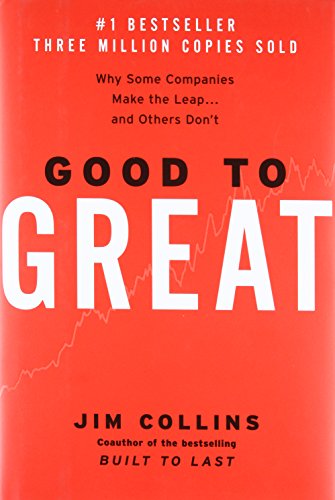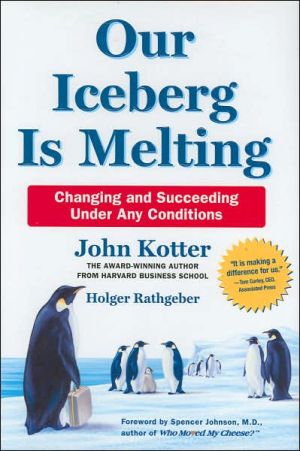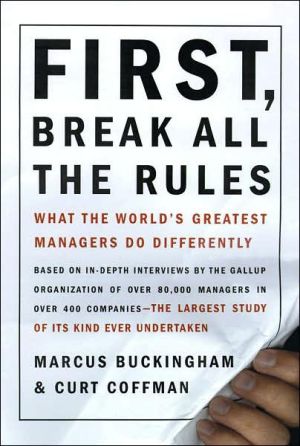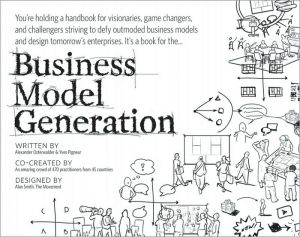Creating a Lean Culture: Tools to Sustain Lean Conversions, Second Edition
The new and revised edition of this modern day classic provides the critical piece that will make any lean transformation a dynamic continuous success. It shows you how to implement a transformation that cannot fail by developing a culture that will have all your stakeholders involved in the process and invested in the outcome. It will teach you how to build success from the top down and the bottom up at the same time. If you are a leader at any level in an organization undergoing or...
Search in google:
The new edition of this Shingo Prize winnining international bestseller shows you how to implement a Lean transformation that really works by developing a culture that builds success from the top down and the bottom up at the same time. If you are a leader at any level in an organization undergoing or considering a lean transformation, this is the book you must read. Improved throughout, this new edition offers new guidance on Lean management in discrete manufacturing, office, and process manufacturing environments, provides specifics on engaging executives through Gemba walks and offers several new case studies as well as invaluable lessons that David Mann has learned since the first edition went to print.
Introduction\ Section 1 What Is the Lean Management System?\ Principal Elements of Lean Management\ 1 The Missing Link in Lean: The Management System\ Developing a Lean Culture Don’t Wait—Start Now!\ Lean Management Focuses on Process Parallel Implementations of Lean Production and Lean Management Changing from conventional mass production Getting rid of the "do whatever it takes!" approach Lean Processes Need Lean Management Focusing on the Process Produces Results Measuring the Process against Expected Outcomes How Can You Recognize Culture?\ Overcoming Cultural Inertia New Settings with Old Habits Won’t Work How to Change Your Culture Extinguishing Versus Breaking Habits Make Sure You Don’t Slip Back into These Old Habits!\ Summary: Technical and Management Sides Need Each Other\ 2 The Lean Management System’s Principal Elements\ The Principal Elements of Lean Management Lean Elements Need to Work Together Execution Is Key to Lean Management Implementing Lean Management: Where to Begin?\ Start with Visual Controls When Implementing Leader Standard Work First Can Work Leader Standard Work in Automated Production Environments Does Lean Management Apply in Process Industries?\ Process Focus in Process Production Summary: Four Principal Elements of Lean Management\ 3 Standard Work for Leaders\ Leader Standard Work Is Process Dependent Leader Standard Work as Interlocking Layers Leader Standard Work Shows What to Do—and What Not to Do.0\ Leader Standard Work Should Be Layered from the Bottom Up What Does Leader Standard Work Cover?\ Team Leaders Supervisors Value Stream Managers Form and Format for Leader Standard Work The Role of Training for Lean Implementation Summary: Leader Standard Work Is Element Number 1 of Lean Management\ 4 Visual Controls\ Visual Controls Focus on Process and Actual Performance A Variety of Tools to Visually Monitor Processes Hour-by-Hour Production Tracking Charts How Visual Controls Enforce Discipline Job-by-Job Tracking Charts Priority Board Hourly Status Completion Heijunka Between-Process Tracking Noncyclical Process Tracking Maintaining Visual Trackers and Acting on the Information They Provide Benefits of Using Simple Visual Controls Instead of More Sophisticated IT Accuracy Versus Precision of Visual Information Proximity of Visual Controls Flexibility of Visual Controls Visual Controls and the "Fingerprint Factor"\ The Power of Networks Intangible Benefits of Visual Controls Summary: Visual Controls and the Data for Lean Management\ 5 Daily Accountability Process\ How Batch Production Differs from Lean Three Tiers of Daily Meetings Tier One: Team Leader and Production Crew Tier Two: Supervisor and Team Leaders The Red Dot, Green Dot Convention Day-to-Day Project Management Tier Three: Value Stream Leader with Supervisors and Support Groups Daily Accountability Exposes and Solves Problems Quickly Further Note on Task Assignments and Follow-Up It’s Not about the Boards!\ The "Vacation Paradox" and Capacity for Improvement Accountability in Office Processes Summary: Daily Accountability Improves Processes\ 6 Lean in Administrative, Technical, and Professional Work\ Lean Management in Enterprise Business Processes Resistance: Accountability and Visual Controls Enterprise Value Streams and Their Political Environment Organizational Governance for Enterprise Value Streams Summary\ Section 2 Learning Lean Management and Production: Supporting El ements of Lean Management\ 7 Learning Lean Management: The Sensei and Gemba Walks1\ Your Sensei and "True North" Provide Direction Gemba Walking Gemba Walking Teaches How to See in New Ways Being the Sensei: Gemba Walking Your Executives Go to the Place, Look at the Process, Talk with the People Gemba Walking as a Structured, Repeatable Process Summary: Learning Lean Management by Being a Sensei’s Apprentice\ 8 Leading a Lean Operation\ Nine Leadership Behaviors to Learn Attribute 1: Passion for Lean Willingness to Make Personal Change Attribute 2: Disciplined Adherence to Process— Accountability Attribute 3: Project Management Orientation Attribute 4: Lean Thinking Lean Thinking Looks for the Sources of Problems Attribute 5: Ownership Attribute 6: Tension between Applied and Technical Details Attribute 7: Balance between Production and Management Systems Attribute 8: Effective Relations with Support Groups Attribute 9: Don’t Confuse Measures of Process w/ Measures of Results A Measure of Process or Result?\ Frequency of Observation Lean Leaders Recognize Imperfection Summary: Consistent Leadership Is the Crucial Ingredient in Lean Operations\ 9 Solving Problems and Improving Processes—Rapidly\ A Root Cause Orientation to Problem Solving Workarounds Are Anti-Improvement A New Way of Thinking Should Perfection Be a Goal?\ Structured Problem Solving Process Who Makes Improvements?\ Short-, Medium-, and Longer-Term Improvements Recommending Future Improvements Managing Improvement Activities Improvement Resources and Skills A Rapid Response System Support Groups Must Keep Pace with Production Summary: Finding the Root Cause of Problems Is Key\ 10 People—Predictable Interruption; Source of Ideas\ Who Do I Expect Today? The Attendance Matrix Who Starts Where Today? The Labor and Rotation Plan Completing the Labor Planning Suite Who Is Qualified for Which Jobs?\ How Can I Encourage Participation? The Idea System Who Will Work on Suggested Improvements?\ A Visual Improvement Suggestion Process Making Listening Visible Lean Training for Line Leaders Where Conventional Training Fits In What If Production People Don’t Buy into Lean?\ Responding to Low Performers Human Resources Policy Issues in Lean Management Summary: Resolving People Issues to Support Lean Production and Lean Management\ 11 Sustain What You Implement\ You Already Have a Management System!\ What Should You Do?\ Rely on Leader Standard Work Maintain the Visual Controls Conduct Gemba Walks Regularly Keep Yourself Honest Assess Your Lean Management System Details of the Lean Management System Assessment Conducting an Assessment When Should You Assess?\ Who Should Assess?\ Interpreting the Assessment Keep Asking These Questions!\ A Lean Culture Is a Beautiful Thing Summary: Maintaining Lean Management\ Appendix A Appendix B Glossary Bibliography Index The Author\








